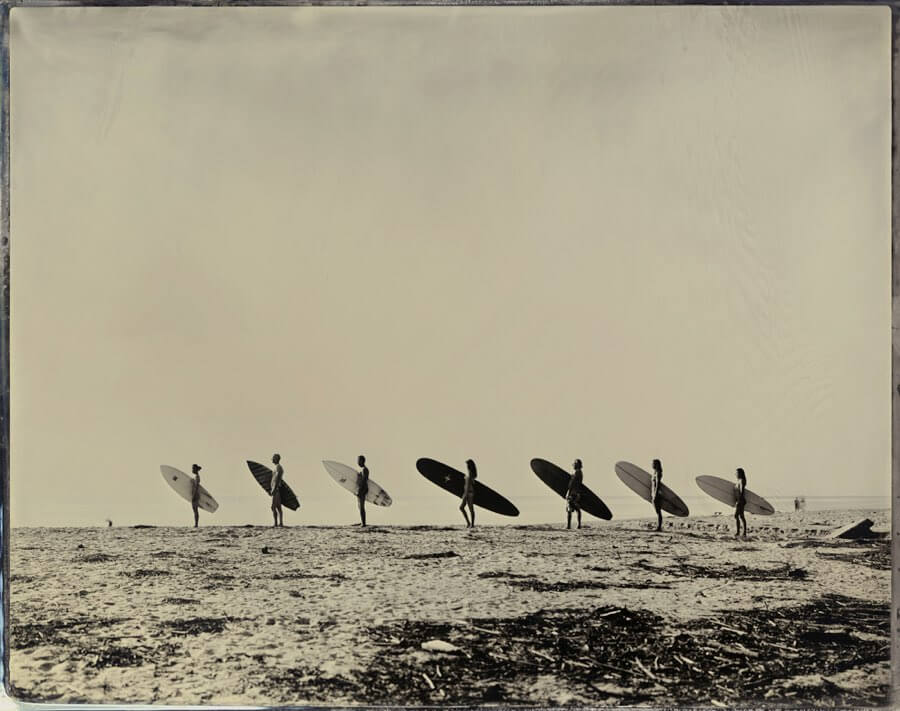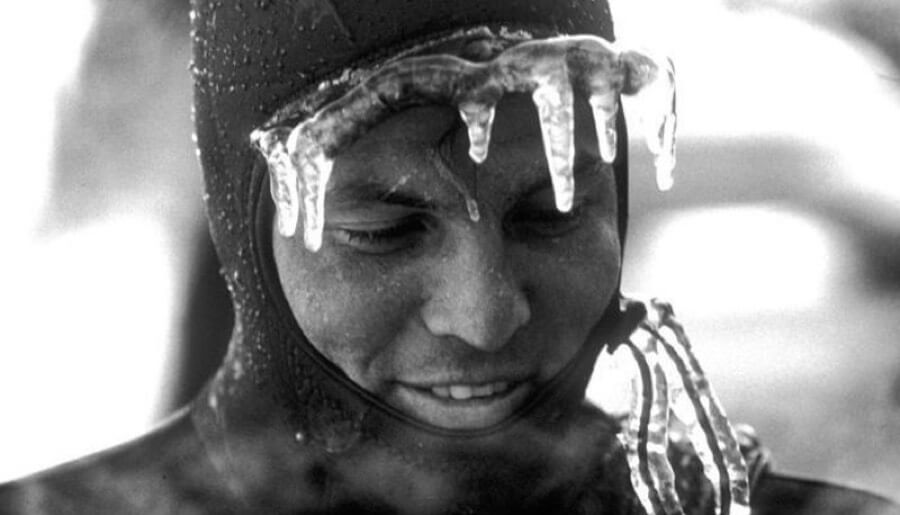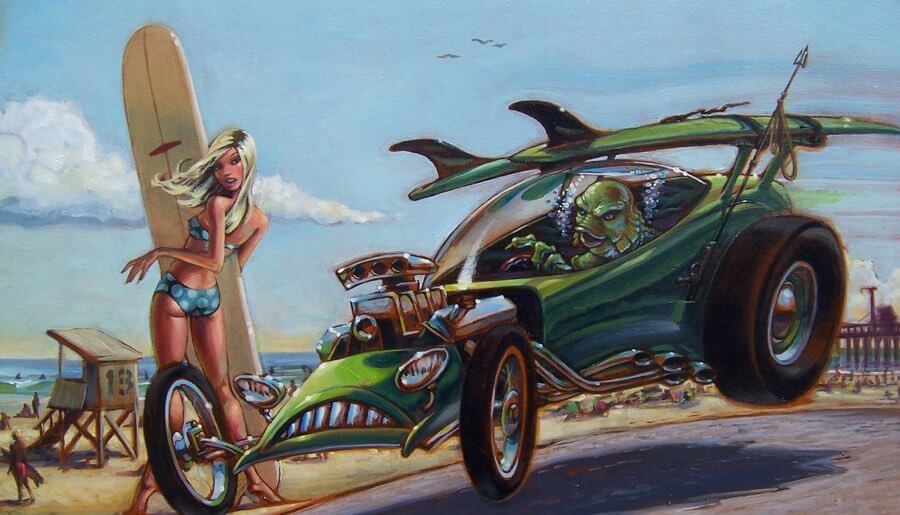There are many different types and shapes (aka templates) of surfboards. A surfer’s ability and style of surfing determines what type of board they ride. This article takes you through the basics of board dimensions, the types and shapes of surfboards there are, what the rocker, fins, and tail shapes are, and what’s best for beginners.

Dimensions of a surfboard
The length, width, and depth of a surfboard greatly affect its or the surfer’s performance in the water.
Length
The length of the surfboard is very important. The longer the board the easier it is to paddle and to stand up on as it feels more stable under the surfer’s feet. Due to this extra stability, beginner’s generally started with a longer board. But that isn’t to say more advanced surfers always progress onto a shorter board. Longboard surfing practically has its own sub-culture, with its own professional surf scene, and is often associated with ‘soul surfing’. Longer boards are less maneuverable due to their length. Surfers who want to perform faster, more aggressive and aerial maneuvers tend to ride shorter surfboards.
Width
The width of the surfboard affects its buoyancy in the water and how stable the surfboard feels under feet. As with the length, the wider the board the more stability the surfboard will have.
Depth
The depth or thickness of the surfboard determines how well it floats. The greater the floatation, the smoother the ride is and the easier it is to paddle. The heavier the surfer, the thicker the surfboard should ideally be.
Types of surfboard
Surfboards have evolved greatly over time. Historically, surfboards were made out of wood. Some still are. Modern surfboards have a styrofoam core coated in fiberglass and epoxy resin, which makes them lighter albeit not as durable as their predecessors.
Shortboard (aka Thruster)
The most common surfboard used for contest-style surfing. It sacrifices paddling ease for speed, power, and control. They are generally around 5’6″ to 6’4″ long and between 16″ and 19″ wide, often with a rounded square tail.
Fish
While the fish is a shortboard, it differs in that it has a wider, rounder nose, a wider mid-section width, and a ‘swallow tail’. They are generally between 5’2″ and 6’4″ long and between 18″ and 22″ wide. They are designed to improve wave catching capability while maintaining speed and maneuvering performance — ideal for small to medium sized waves.
Gun
The gun is long, narrow, and has a pointy nose and tail. They range from 6′ to 10′ plus. They are specifically designed for big wave surfing and more powerful, steeper waves. Because of their shape, they are easier and faster to paddle and easier to control on the steeper wave faces. The name derives from the term ‘elephant gun’, meaning the surfboard is the surfer’s gun for hunting down big waves.

Longboard (aka Log)
Longboards are usually over 8′ or 9′ with a rounded nose. Longboards are much more stable in the water, easier to paddle, and great for catching smaller waves — making them the ideal surfboard to learn on. However, due to their size, they can be harder to get through the white water and oncoming sets to get ‘out the back’ (to where the waves break, not after they’ve broken). They generally only have one large fin.
There is a great deal of style attached to riding a longboard. Where the radical sharp turns and aerial maneuvers possible with a shortboard are not suited to a longboard, other maneuvers are like hang fives or hang tens (aka ‘toes on the nose’), drop-knee turns, cross-stepping along the deck of the surfboard, and even tandem surfing!
Foamboard (aka Softboard or Foamie)
Designed specifically for beginners and younger surfers. Literally named as they are made of foam, which crucially makes them much more buoyant in the water and safer (to the surfer and others in the water). Their safety properties make them an obvious choice for surf schools, and their durability makes them an obvious choice for surf rentals.
Bodyboard (aka Boogie Board)
Bodyboards are small, more rectangular boards you lay on rather than stand on. Used by a variety of age groups, they are a popular, and safer choice for families and children playing in small waves, or at crowded beaches. Made from either polystyrene, foam, wood or fiberglass. They can be very cheap and are a lot of fun.
Surfboard makeup
To explain some common terminology:
Tail
The rear-end of the surfboard. There are many different shapes of tail — often experimented with in surfboard design for their performance in the water. Some examples include ‘pin tail’, ’round tail’, ‘swallow tail’, and ‘fish tail’.
Nose
The front-end of the surfboard. Much like the tail, the nose comes in different shapes. Shorter boards tend to have more of a pointy nose to pierce through the water for maximum speed, where longer boards tend to have a rounder nose.

Fins (aka Skegs)
The fin is the curved bit hanging down from the bottom of the surfboard near the tail. They give the surfboard directional stability on the face of the wave enabling turns and tricks. The early Hawaiian Olo boards didn’t have a fin, it wasn’t until the 30s when Tom Blake put a fin on a longboard that the idea caught on. Since then, twin-fins (two fins) were introduced, then tri (three fins), then quad (four fins). Fins can be permanent glassed-on fixtures of a surfboard, or more commonly fins are detachable and interchangeable, allowing surfers to experiment to suit their own style.
Rail
Some maneuvers require the surfer to ‘grab the rail‘ to perform sharp turns on the wave face. The rail is the side of the surfboard, on the left and right, or rather on the front or back-side of the surfer.
Rocker
The rocker refers to the bottom curve of the surfboard. The rocker is adjusted to enhance factors such as speed or maneuverability. As a general rule, the more bottom curve the surfboard has, the looser the surfboard is in the water allowing more maneuverability, albeit slower. And less bottom curve provides greater speed, but with less maneuverability (harder to turn).
As such, a surfboard with more bottom curve is better in larger waves as the surfer has more maneuverability and the board is slower and easier to control on steeper, faster wave faces. A flatter bottom curve would be better in smaller waves where more speed is needed. Most surfers probably prefer a neutral rocker as a happy medium.
Surfboard wax
Typically surf wax products look like a bar of soap. Surfers use surf wax to provide grip on the surface of their surfboard. The wax is applied by being rubbed over the top deck of a surfboard. The friction this creates melts the wax into tiny bumps, providing grip for a surfer’s feet on an otherwise slippery surface in the water.
There are different types of surf wax. It’s important to use the correct wax for the temperature of the water, or the wax will be ineffective. The different kinds of wax are:
Cold water
Used in water temperatures below 58°F / 14°C
Cool water
Used in water between 59-64°F / 14-19°C
Warm water
Used in water between 65-74°F / 19-24°C
Tropical
Used in water above 75°F / 24°C
Curated by Andrew Couldwell on Apr 11, 2006

